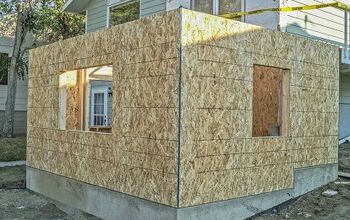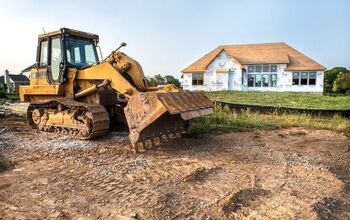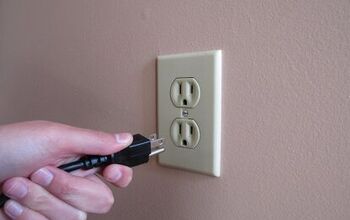21 Vs. 30 Degree Framing Nailer: What Are The Major Differences?

Now that you’ve decided to start a DIY building project, save time with a nailer. Nail guns automatically drive nails into the wood with exceptional precision. For tighter spaces in your framing, such as corners, choose a 21-degree nailer or 30-degree nailer.
A 21-degree nailer has two plastic strips of 60 to 70 nails and can be used for framing and siding. A 30-degree nailer uses two paper strips of 88 nails and is more versatile in its applications. A 30-degree nailer has a larger capacity, but the clipped head and offset head nails it uses don’t always fit building codes.
Let’s take a closer look at how nail guns work and when to use a 21-degree versus a 30-degree framing nailer.
Do You Need to Hire a Framing Contractor?
Get free, zero-commitment quotes from pro contractors near you.

How A Nail Gun Works
Nail guns work in much the same way as staple guns with some subtle differences. Framing nails are held together in plastic strips, coils, and other types of packaging. When you pull the trigger of the nail gun, a piston hits the top of the nail and drives it into the wood. A spring mechanism loads the next nail from the strip or coil.
Video: Rigid 18V 30 Degree and 21 Degree Framing Nailers
Framing Nailer Magazines
Nail guns are designed with magazines that house the packages of framing nails. Each model of nail gun is designed for a specific angle of framing nails. The angle refers to how the nails are packaged and not how the nails are driven into the wood. Framing nails are always driven into wood boards at 90-degree angles.
Framing Nailer Angles And Capacity
The magazine of a 21-degree nailer magazine accepts plastic strips of 60 to 70 nails. Depending on the manufacturer, the nails are placed on the strips at an angle between 20 and 22 degrees. For a 30-degree nailer, the nail gun works with two paper strips of nails, and each strip has 88 framing nails. The nails are mounted on the paper at an angle that is between 30 and 34 degrees.
Framing Nails And Nail Guns
Nail guns use the same framing nails as what you would use if you were building with a hammer. The only difference is how the nails are packaged to work with a nail gun.
Why Nailers Use Angles
If framing nails are always driven into wood at a 90-degree angle, why do nailers have different angles? The reason is for packaging. Angling framing nails onto plastic or paper strips lets the manufacturer maximize the space on the strip. You get more nails per strip, and this means fewer stops to reload.
When you are building a house or other large structure, stopping to reload your nailer takes time away from the job. Nailers that use angled framing nails are also lighter and smaller than nail guns that use straight-mounted framing nails.
What Is A 21-Degree Framing Nailer?
A 21-degree framing nailer gives you some room for choosing the packaging of your framing nails. The nail gun works with nail strips that are between 20 and 22 degrees. You need to use nails with a full round head for this type of nailer.
Packaging For 21-Degree Framing Nails
21-degree framing nails are mounted on plastic strips with fewer nails than what you will find on larger capacity nailers. With only 60 to 70 nails per strip, the best use of a 21-degree framing nailer is for those occasional small spaces, such as corners.
The downside to the packaging is that as each nail is driven into the wood, the nail gun ejects a piece of plastic. This is not only a safety concern, but it also makes a mess on your job site. It’s always recommended to wear safety glasses while using a 21-degree framing nailer.
Where To Use A 21-Degree Framing Nailer
Use a 21-degree framing nailer for siding, fencing, sheathing of the roof and walls, and framing. Most 21-degree nail guns work with 2” to 3 1/2” framing nails.
How To Load A 21-Degree Framing Nailer
Align the plastic strip with the guides in the magazine of your framing nailer. Slowly slide the nail strip into the magazine. Don’t force the nails into the nail gun. If the nails get kinked, you risk a misfire or jam in the nail gun.
How To Use A 21-Degree Framing Nailer
Place the nosepiece of the framing nailer against the wall at a 90-degree angle. Hold the gun with two hands. Put one hand under the nail gun with your finger on the trigger. Put the other hand on top of the gun. Hold firmly, but not tightly. You want the nail gun to retract after firing. Gently pull the trigger without pulling away from the wood boards.
What Is A 30-Degree Framing Nailer?
Nothing beats a 30-degree framing nailer when it comes to flexibility and versatility. This nail gun works with paper strips of nails that are mounted at 30 to 34 degrees. You can find models of 30-degree framing nailers that handle 2” to 3 1/2” nails for framing jobs.
Packaging For 30-Degree Framing Nails
The nail gun holds two paper strips of 88 framing nails, giving you twice the capacity of a 21-degree framing nailer. The upside of these nailers is that the paper strips are easier to store and not as messy as the plastic strips. The downside is that any type of moisture destroys the paper strips.
Where To Use A 30-Degree Framing Nailer
A 30-degree framing nailer gives you the most flexibility. Use it for decking, siding, woodworking, hard lumber applications, and framing.
How To Load A 30-Degree Framing Nailer
Make sure that the paper is free of oil and other substances. Feed the paper strip into the magazine of the nailer. Go slow to prevent kinks and tears in the paper.
How To Use A 30-Degree Framing Nailer
Put the nose of the nailer against the wood where you want to drive the nail. Hold the nail gun securely on the bottom and top, and slowly press the trigger.
21-Degree Vs. 30-Degree Framing Nailer: Which Is Better?
Both 21-degree and 30-degree framing nailers have their pros, cons, and applications. A 21-degree nailer uses plastic strips and tends to be messier than a 30-degree nailer due to the plastic being ejected. However, even though the 30-degree nailer uses paper and isn’t as messy, the paper can easily be ruined if it comes into contact with moisture.
Another factor is the amount of nails each nailer holds. 21-degree nailers hold 120 to 140 nails, while 30-degree nailers hold a total of 176 nails. Therefore, if you want a nailer you won’t have to reload frequently, the 30-degree nailer is better.
The 21-degree nailer is better at fitting into small spaces, while the 30-degree nailer is more versatile. For most applications, a 30-degree nailer will suffice. It’s only going to be small, tight areas like corners where you’ll need a 21-degree nailer.
21-Degree Vs. 30-Degree Framing Nailer: Comparison Table
21-Degree Nailer
30-Degree Nailer
Nail Head
Full round
Clipped or offset
Nail Length
2 to 3.5 inches
2 to 3.5 inches
Collation Type
Plastic
Paper
Degree Of Collation
20° to 22°
30° to 34°
Applications
Framing, decking, siding, and sheathing
Decking, siding, woodworking, hard lumber applications, and framing
Product Recommendations
(photos via Amazon)
Other Types Of Framing Nailers
There are a couple of other common types of framing nailers that you’ll want to know about. We’ll get into all of the details below.
15-Degree Framing Nailer
The main thing that sets 15-degree framing nailers apart is that they are wire-collated. Up to 300 nails can be held within the two thin wire strips, which are slanted at an angle of 15 degrees. Each nail must have a fully rounded head.
15-degree nailers are very popular because the nails they use are often preferred by building codes. They’re great for framing in tight spaces, corners, floor joists, and wall studs.
28-Degree Framing Nailer
28-degree nailers also use wire strips for collation, and the nails used can have full round or clipped heads. This type of nailer is great for all types of framing and sheathing.
However, it’s important to note that you cannot use 30-degree nails in a 28-degree nailer. This will cause nail jam and can even damage the nailer itself.
Safety Tips For Framing Nailers
Here are some safety tips for using any type of framing nailer.
- Always wear safety glasses when you load, unload, and operate a framing nailer.
- Follow the manufacturer’s instructions.
- Only use framing nails that are designed for your style of nail gun.
- Don’t modify or disengage safety features of the nailer.
- Only point the nailer at your materials or the ground – never at a person or in the air.
- Unplug the nail gun when not in use and when you are loading and unloading the magazine.
- Check strips of framing nails for any defects before use – discard damaged nail strips.
Do You Need to Hire a Framing Contractor?
Get free, zero-commitment quotes from pro contractors near you.

Which Framing Nailer Should I Buy?
If you’re looking for the most versatile nailer with the largest capacity, a 30-degree nailer is best. Still, you’ll want to be sure to keep it away from moisture, which can destroy the paper strips that collate the nails. Another downside is that the clipped head or offset head nails they use don’t always comply with building codes.
21-degree framing nailers are a good choice for small areas such as corners, but they’re not as flexible as 30-degree nailers. They also hold less nails and will need to be reloaded more frequently. However, their full round headed nails comply with most building codes.

Jennifer L. Eggerton loves being hands-on, whether it's with a home DIY project, making repairs, re-decorating a room, or keeping life organized. She enjoys helping people by sharing her knowledge, insights, and experiences, as well as her lessons learned. In addition to her work as a writer, Jennifer is a Jeep® overlander, self-published author, and nature photographer who loves being outdoors.
More by Jennifer Eggerton













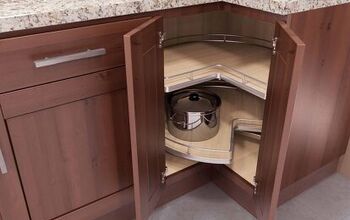
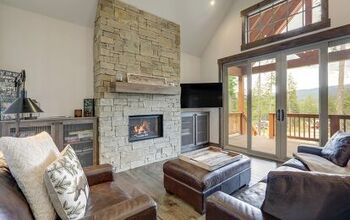
![10 Best Scroll Saws for 2022 [Ultimate Reviews & Buyer's Guide]](https://cdn-fastly.upgradedhome.com/media/2023/07/31/9070684/10-best-scroll-saws-for-2022-ultimate-reviews-buyer-s-guide.jpg?size=350x220)





